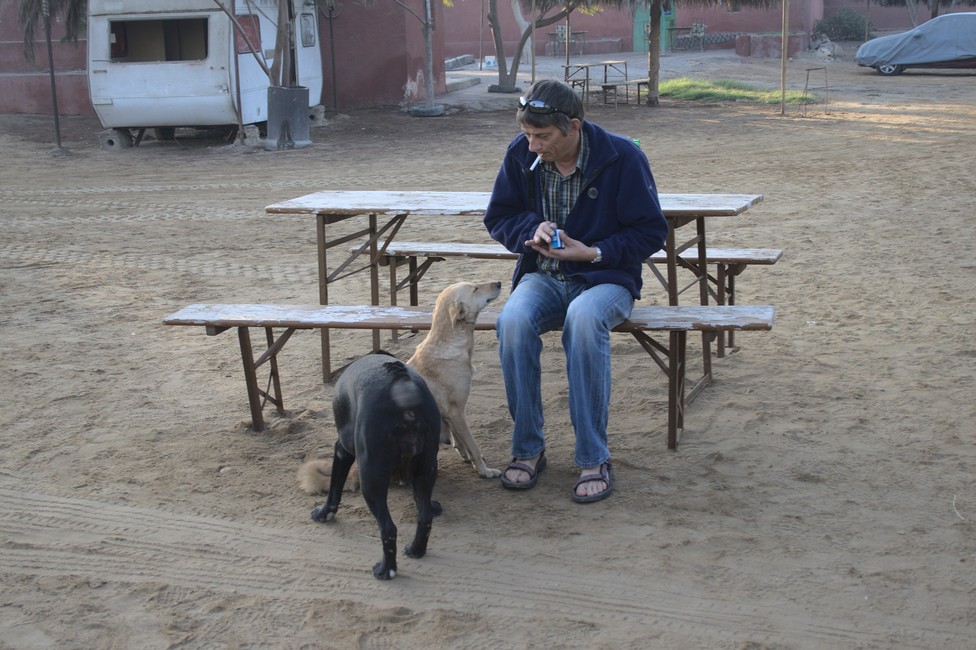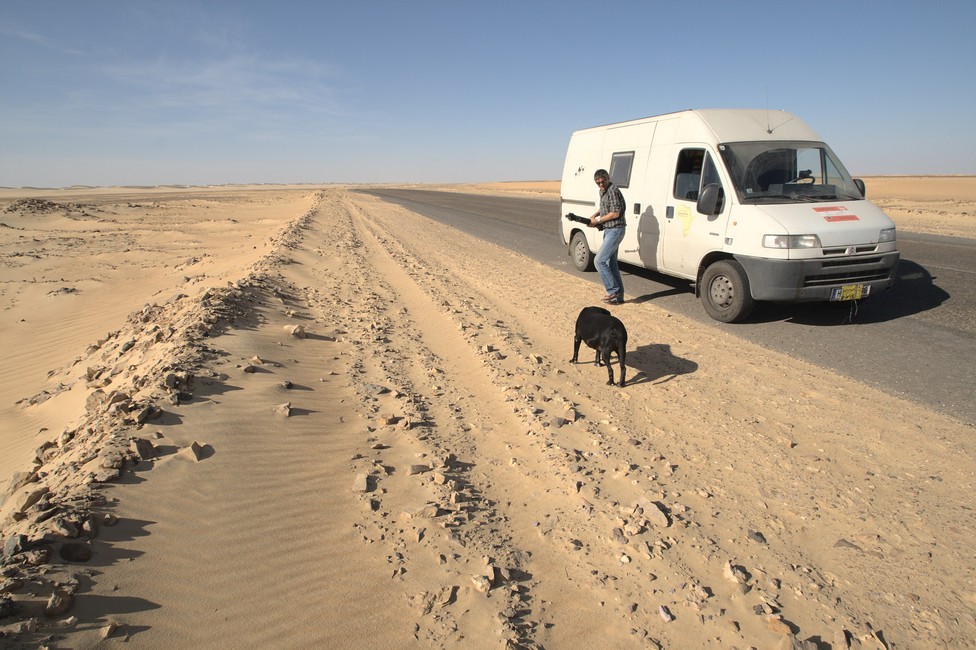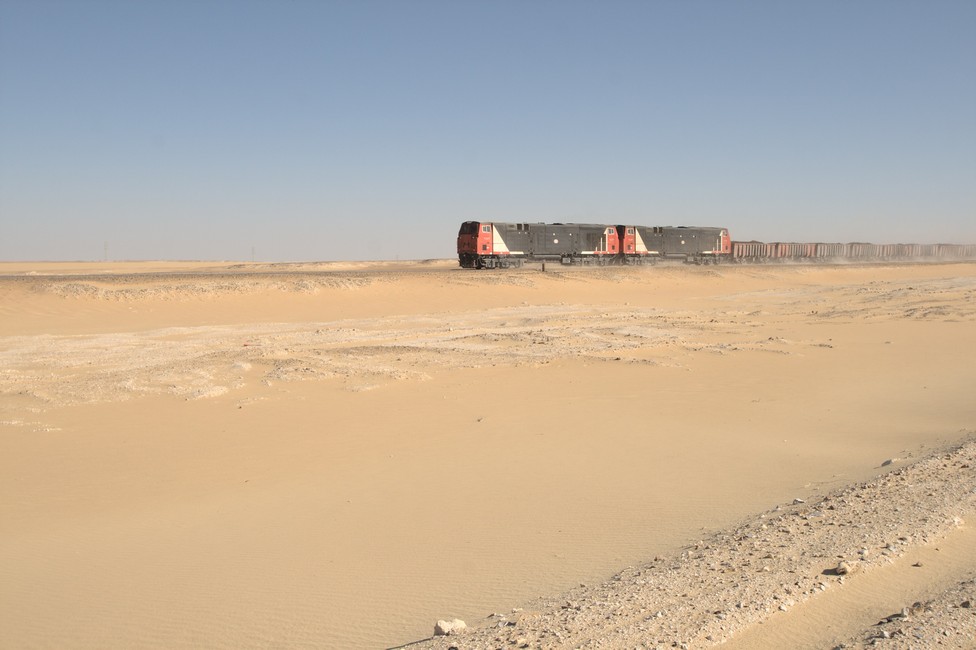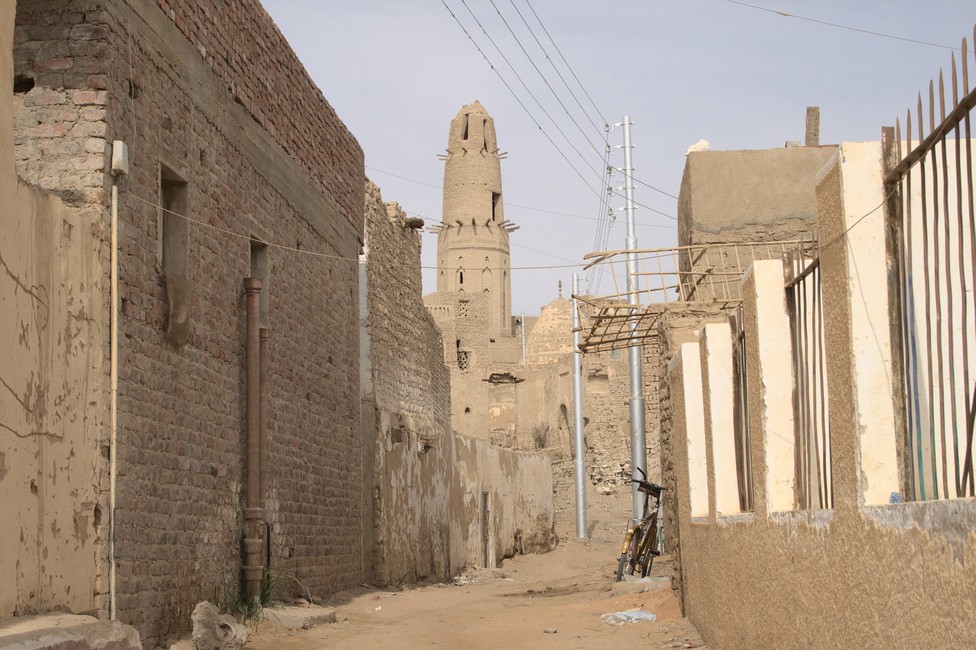We head for the black desert. Next morning we will leave Cairo, from here our journey leads us only South, deeper into the African continent. It will take us several days through the black and the white desert, untouched areas, only the tarmac ribbon points at civilization.
In the morning we leave the campsite of Cairo. We felt comfortable here, because infrastructure as quite good, internet inclusive.

Now we still have to find our way out of Cairo. This is a complicated matter, because we already observed days before that there is a certain one way system which is not a problem but they change the direction depending on traffic volumn. Thus it can happen that a road is passable in a certain direction in the morning, which changes in the evening in the opposite direction. Anyway we will see.
Cairo is a difficult and controverse city. Millions of people live in the shadow of the pyramids at the Nile River. All complain about the dirt in the city, about heavy traffic and overpopulation but nobody would move away.
In the old parts of Cairo streets and houses had not changed since the middle ages. But there are also new suburban areas with high tech shopping malls.
The garbage problem is obvious everywhere. Privately waste disposal is organized by so called garbage men. The good news is 95% is recycled, not in an industrial way but by families that live form waste. The waste who can be burned is sold to bakeries or bath houses. Streets are dived by different families, for new town areas they fight for the garbage rights. The areas stay in the family and are inherited by their children.
Many copts migrated to Cairo, which made additional problems as they were not muslims. They were breeding pigs and were in need of food for the animals, which they bought from the garbage families. Some of the families got rich and rent their garbage routes to the coptic families.
Still today the buy the rights of the waste of certain houses. Not bad compared to the western world where we have to pay for waste disposal, here the house owners earn money by there own waste.
After a few certain difficulties we find our way out of the town and are quickly in the middle of the desert.

Already soon behind Cairo the desert changes its color from sand to black. Black hills rise out of the yellow desert sand. The came into existance by erosion, which had spread a layer of black dust across the yellow sand. These small, black, vulcano like hills are typical for this part of the desert.
Bodo and Bine are rushing along and we decide for a break. Having coffee and bread we enjoy the view, But we have to go on, as it is 1400 kilometres through the desert.
Again and again we stop and are amazed about the bizar shapes of the rocks and enjoy the prevailing silence
But suddenly the silence is interrupted. Out of the nowhere a train approaches.

It is haunting. It seems to us that the train is endless. It moves the hot desert sand into the air and covers the scene in to a huge dust of sand.
Like cream heaps the dunes look like, which were formed by the wind over years and the wind moves them further on. Wandering dunes are formed that way as the wind erodes the sand from the top of the dune, stores it at the bottom, and blows sand again on top. That way the dune moves only a few metres a year covering everything on its way.
Endless, hour by hour we drive through the desert and hour by hour we do not meet a single vehicle. We are alone.
Sometimes out of the nowhere a oasis appears and the same quick way it disappears again.
In the late afternoon we reach the oasis Bawiti. We have managed a third of the distance from Cairo to Luxor. In Bawiti we will spend the night at a campsite. The old part of the town is surrounded by palm tree plantations, the mud brick houses can hardly be seen.
